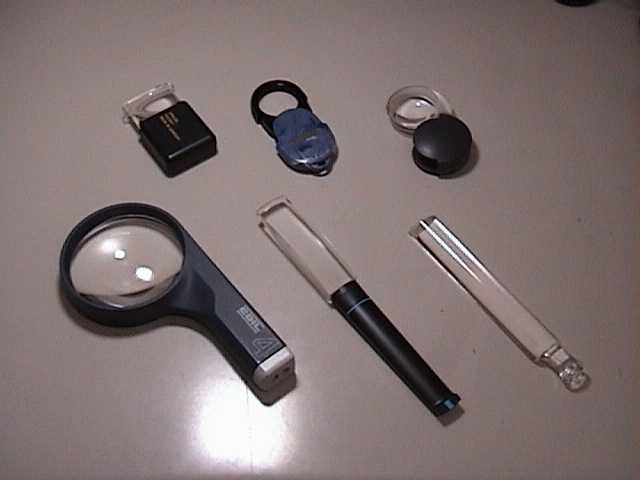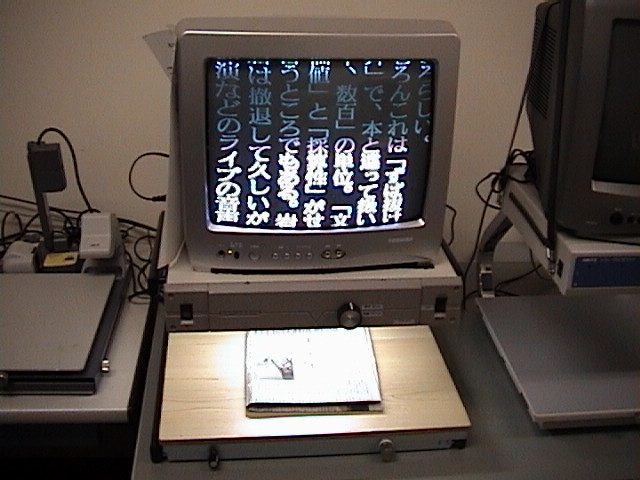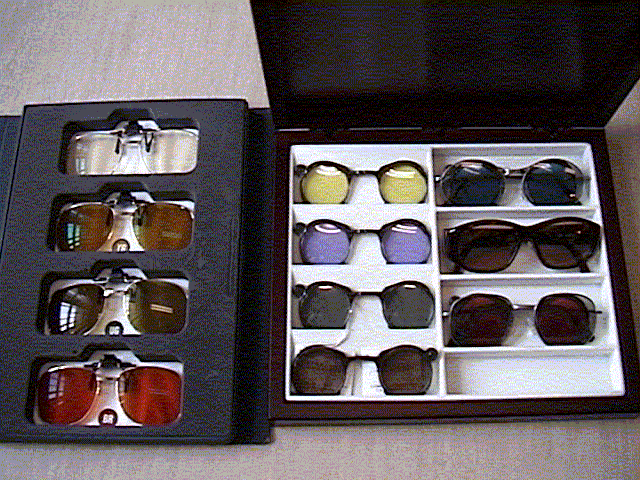This site is titled "Low Vision Care and Optics" in Japanese. I can serve the contents solely for Japanese people. If you need to get information on Low Vision in English, I recommend you to access the site of Lighthouse International in New York.
- Who made this site?
- Name: Tanabe Tadaaki
- Occupation: Rehabilitation Instructor
- Qualification:
Optician
Certified social worker(State qualification)
Orientation and mobility instructor
Braille instructor
- Organization:
Nippon Lighthouse
Rehabilitation Center for the Visually Impaired
- Address:
2-4-37, Imazu-naka, Tsurumi-ku,
Osaka 538-0042, Japan
- Contact:
Tel: (+81)6-6961-5521
Fax: (+81)6-6961-5525
- What purpose is the site for?
- Information on Low Vision for Japanese people. You can get the knowledge about it and resources in Japan.
- This site offers Japanese translation of Dr. Rubin's texbook with permission.
- You can get Japanese translation of "Optics for Clinicians" written by Dr. Melvin L. Rubin as PDF file freely with no charge. "Optics for Clinicians" is excellent book to learn basic optics and visual optics for beginners.
- If you access the page titled "Key Paragraphs of Optics for Clinicians", you can take a look at the excerptions related to the index of the book both in English and Japanese. Once installing Japanese Font(x-jis), you can also see Japanese.
Low Vision
"Low Vision" is not totally blind. We can refer it to as subnormal vision and equivalent to visual impairment. Reduced visual field and/or subnormal visual acuity which are commonly and clinically manifested make visual function reduced.
Several terms described in vision rehabilitation literature include ocular disorder, visual impairment, visual disability and visual handicap. Ocular disorder is a disease, injury, or congenital anomaly. Visual impairment is a measurable reduction of the basic functions such as visual acuity, visual field, contrast sensitivity, color vision and dark adaptation as compared with the normal age-matched population. Visual disability is a limitation of a person's ability to perform certain visual tasks. Visual handicap is the disadvantages experienced psychosocially and economically because of visual disability.
Back to top
Visual acuity
Remaining visual acuity is one of the most useful indices of low vision because visual acuity refers to the resolution capability of a neuro-optical system. We usually use Snellen letters when distance visual acuities are elicited. When we measure near visual acuities, reading cards with printed words are also used. Visual acuity is of utmost importance to the treatment program involving the selection of a number of magnification devices for low vision.
Back to Low vision
Visual field
The visual field is the area of space visible to your eye when it is fixating a given point. The methods to evaluate visual field range from Amsler Grid Test, the confrontation test and the tangent screen to the Goldman perimeter and elaborate electronic computer-controlled systems. In low vision, loss of peripheral visual field may cause difficulties in mobilty. Thus, need for mobility training could well depend on the quality of remaining visual field.
Back to Low vision
Contrast sensitivity
The assessment of contrast sensitivity function evaluates the sensitivity of the eye to high and low contrast objects, and is an effective technique to measure remaining visual function of the low vision patient. Even though only visual acuity and visual field loss are in the legal definition of visual impairment at present, contrast sensitivity might be reduced while acuity and field remain relatively normal. The assessment of contrast perception at threshold allows us to understand the blurred vision experienced by low vision patients.
Back to Low vision
Color vision
Many conditions of low vision patients suffering from ocular and neurological disorders such as glaucoma, optic atrophy, age related maculopathy and retinitis pigmentosa result in color vision deficiencies. Assessing color vision enable us to monitor the progression of the ocular and/or neurological disorder of the low vision patient.
Back to Low vision
Prescribing low vision aids
We prescribe low vision aids to enable the low vision patient to use remaining vision more effectively in order to overcome the visual impairment and avoid visual disability. There are many different types of low vision aids. Near low vision aids are available in spectacles, microscopes, telemicroscopes, handheld magnifiers, standmagnifiers and illuminated magnifiers. Distance vision aids are available in spectacle mounted telescopes, handheld monoculars and binoculars.
Magnification:
Dealing with low vision aids, we should concern ourselves with magnification involved in defferent methods of specification.
-
Angular magnification: Angular magnification is obtained in ratio form; The angular subtense of the image as viewed with the device is compared with the angular subtence of the object as viewed without the device.
-
- Mt = -Fe/Fo (equation 1)
where
-
- Mt = angular magnification of afocal telescope at distance
- Fe = focal power of eyepiece in diopters
- Fo = focal power of objective lens in diopters
- Relative size magnification: Relative size magnification is achieved by enlargement of the size of the object to obtain an increased angular subtense. If the low vision patient whose reading acuity is 2M desires to read 1M, he/she may need a size magnification of 2X to solve his/her problem. Thus, you should physically enlarge the print by two times.
- Relative distance magnification: Relative distance magnification is achieved when the distance to the object is decreased, thereby increasing the angular subtense of the object. If the low vision patient cannot watch television screen well, he/she may enlarge the images when he/she sitting closer to the television set.
The angular subtense of the image when using the low vision aid is compared to that of the object located at arbitrary reference distanace of 25cm. Thus, a magnifier which has a focal power of +4.00D and would provide clarity for an object viewed at 25cm creates a magnification of 1X.
Msm = Fsm/4 (equation 2)
where
Msm = relative distance magnification for an object viewed at less than 25cm
Fsm = focal power
We can use simple magnifier attached to telescope as a reading cap to focus at a near distance. The magnification of this system is a combination of the two equations specified above.
M = -Fe/Fo X Fsm/4
Prescribing near low vision aids for near vision
The patient should be aware of choices of treatment before the prescription of near vision aid is determined. Amplitude of accomodation, refractive error and working distanace are taken into account for the suitability of high plus lens.
 |
Click to enlarge
Method to determine magnification:
M chart is one of the methods of arriving at an addition. It ranges from 1M to 12M to measure the remaining near visual acuity in M notation. The patient can see them at preferable working distance. Once its distance and M notation are ditermined, you should divide the distance by M, which result in the focal length of the near vision aid. Hence, you can gain the diopter by the procedure of dividing 100 by the focal length.
Prescribing telescope for intermediate and distance vision
Spectacle mounted telescope and hand held telescope are available for intermediate and far distance. They have defferent features derived from structures of Galilean and Keplarian systems conserning fields of view and wight, thereby we can select telescopes depending upon patient's goal task.
 |
Click to enlarge
Prescribing Closed Circuit Television System(CCTV)
CCTV can electronically magnify up to 60X without such significant optical aberration as spherical aberration, oblique astigmatism, chromatic dispersion and distortion, adding the advantage of wider field of view depending on monitor size and working distance. It also include reverse polarity for glare reduction.
 |
Click to enlarge
Prescribing tints
Glare sources and low illumination aften affect low vision patient's vision. Absortive tints can protect the eyes susceptible to glare sources and decreased illumination, and also give the patient comfort and good visual performance.
 |
Click to enlarge
Back to top
To Japanese




